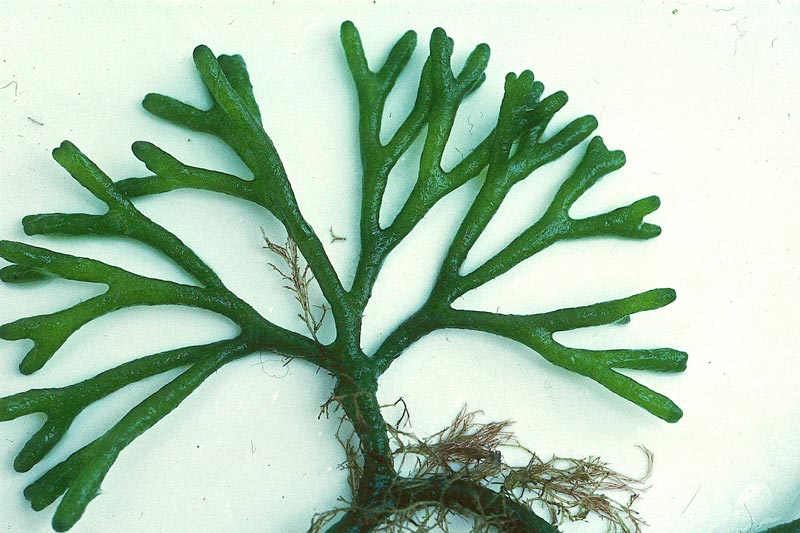Codiums: Edible around the world
Oceanographers like to call Codium a minor seaweed because it is not commercially exploitable. Yet where it is found around the world it is eaten. It is also considered one of the most invasive species in the world. So, there’s food near you.
One species, Codium fragile ssp. tomentosoides, was first reported in Holland in 1900. In the century since it has spread throughout Europe. It’s now found along the shores of Britain, Australia, New Zealand, the Mediterranean and North America It was first reported in North American in 1957 on Long Island,
Many Codium species are fleshy and have a soft texture. This leads to such common names such as “sponge weed” “rats’ feet” or “dead man’s fingers.” They are found often in the the intertidal zone on rocky shores but are also common on beaches and around found around Florida and the Gulf Coast. Raw Codium has an earthy flavor, much like oysters, and is full of vitamins and fatty acids. It sells for about $7 a pound, wet.
In the Hawaiians Islands Codium, after being throughly washed, is eaten raw, often with tomatoes. It is never cooked or blanched because it becomes soft and disintegrates from the heat. In Japan it is preserved in salt.
The Codiums include C. muelleri, C. tenue, C. formosanum, C. intricatum, and C. papillatum. Pictured are C. reediae, C. fragile, C. isthmocladium, C. edule, C., tomentosum, and C. decorticatum.
Codium is the favorite food of some sea slugs, snails and sea urchins. It is often found on beaches after a storm still attached to little pebbles or shells and some think that is how some beaches get the pebbles and shell build up.
Codium Salad
4 cups Codium, well cleaned
1 small sweet onion
1 medium tomato
1/4 cup soy sauce
2 teaspoons wine vinegar
2 teaspoons sugar
1/4 cup sherry
1 teaspoon black pepper
Mix dressing ingredients and pour over chopped onions. Just before serving, chop the tomatoes and Codium and toss with dressing. Garnish with slices of tomato. Chill and serve.
Green Deane’s “Itemized” Plant Profile
IDENTIFICATION: Codium is pale to dark green or olive green, very bush-like appearance, with many branches arising from a disk shaped holdfast. Branches are cylindrical, resembling fingers. When submerged, Codium branches feel soft and “fuzzy” When washed up on beaches and or during the winter hairs are lost and the branches become coarse. Codiums can grow up to four feet and can wash up on beaches as a whole plant or in small pieces, particularly after storms.
TIME OF YEAR: Year round, grows in spring and fall
ENVIRONMENT: Two feet to 200 feet, in northern climates in tidal polls near low tide, southern water on reefs, washed up on shore.
METHOD OF PREPARATION: Usually raw, wash well and check local news for any harmful algae blooms. If cooked it disintegrates. Can be preserved in salt.


